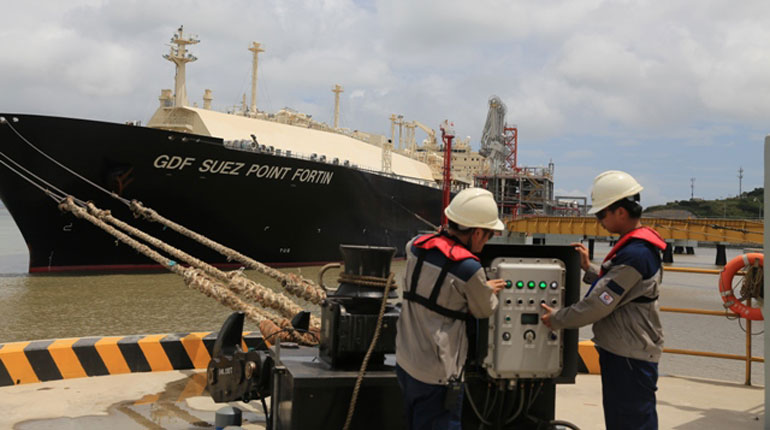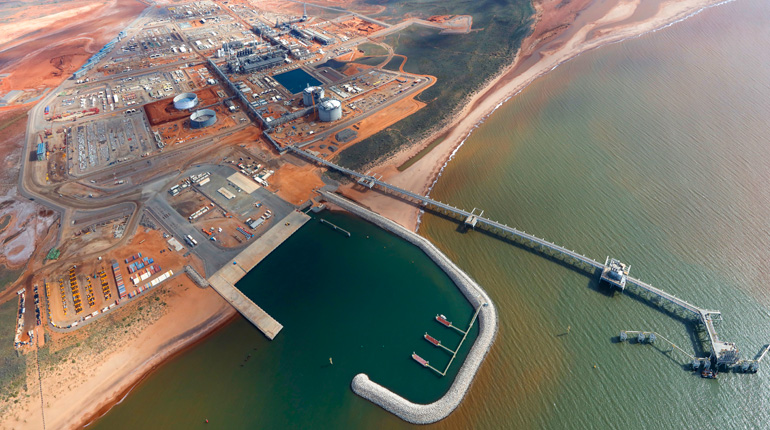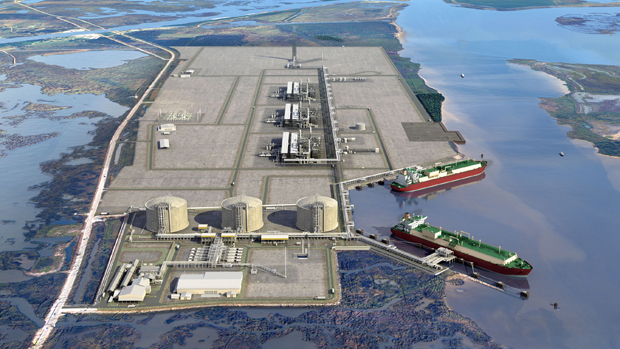 The Ningbo LNG terminal. The facility has helped prevent gas shortages in Zhejiang. (CNOOC)
The Ningbo LNG terminal. The facility has helped prevent gas shortages in Zhejiang. (CNOOC)
China National Offshore Oil Corp.’s (CNOOC) Ningbo LNG terminal helped stave off a supply shortfall in Zhejiang last month after two pipeline accidents in central China crimped supply to provinces further down the line.
A section of Sinopec’s Sichuan-Shanghai pipeline in Hubei province exploded on 20 July, leaving industrial users downstream short of gas. In Zhejiang, the shortfall amounted to 6 million cubic metres per day (MMcm/d).
The next day, part of PetroChina’s second West-East Pipeline in Zhongwei started leaking, cutting deliveries to Zhejiang by 4 MMcm/d.
The two accidents left Zhejiang facing a gas shortage of 10 MMcm/d, forcing the province’s main gas company, Zhejiang Gas Development, to turn to Ningbo LNG for help.
The terminal ramped up supply of regasified LNG into Ningbo’s pipeline grid from 6 MMcm to 10.2 MMcm on 20 July, meeting more than half of Zhejiang’s daily demand. Supply then surged to 14 MMcm on 22 July, equal to 60% of the province’s demand.
Meanwhile, CNOOC redirected an LNG cargo to Ningbo from its Dapeng terminal in the southern city of Shenzhen. The cargo provided nearly 100 MMcm after regasification, helping to increase the terminal’s send-out. Supply from Ningbo peaked at 14.51 MMcm/d during the shortages, CNOOC said on 28 July.
By the time Sinopec restored flow rates along the Sichuan-Shanghai Pipeline (SSP) to normal levels, the Ningbo terminal had supplied a total of 143 MMcm of pipeline gas during 20-31 July, according to CNOOC Gas & Power.
"CNOOC received the go-ahead to build the Ningbo terminal for the sake of energy security. It always supports gas use in the region when supply from other sources is constricted," a source at the terminal told Interfax Natural Gas Daily.
"But we also want to grow our share of the Zhejiang gas market. We were able to do this in previous years when regional demand grew quickly," the source added.
Surging supply
The terminal overtook Sinopec as the second-largest source of gas for Zhejiang during the 2013-2014 winter heating season, providing around 572 MMcm of regasified LNG that met 28% of the region’s demand during the period.
Meanwhile, Sinopec supplied 515 MMcm through the SSP, accounting for 25% of demand, according to data from the National Development and Reform Commission (NDRC).
Following negotiations with CNOOC, the NDRC’s Zhejiang branch set the citygate price of regasified LNG entering Ningbo’s gas grid at RMB 4.07 per cubic metre ($16.60/MMBtu) in 2013 – equivalent to more than $18/MMBtu at the time – and then RMB 3.97/cm in 2014. This was significantly higher than the RMB 3.31/cm tariff for new users of gas in the same years.
"In the winter of 2013-2014, pipeline gas from PetroChina and Sinopec wasn’t enough to meet surging demand. Zhejiang Energy took every cubic metre they could from the terminal, even if it was more expensive," SCI International analyst Qie Jing told Interfax Natural Gas Daily.
Fading importance
But Ningbo’s prominence faded last year when China’s slowing economy and globally low oil prices reduced demand for less-affordable gas. The terminal supplied 730 MMcm in the first nine months of 2015, down by 39% year on year, said CNOOC.
It was also significantly short of the 2.3 billion cubic metres the terminal supplied in 2015 under an agreement between CNOOC and the Zhejiang arm of the National Energy Administration.
"Pipeline gas alone was enough to meet regional demand, so Zhejiang Gas cut purchases from us. They thought our gas was too expensive," said the source.
Demand has recovered in the first half of 2016 following the NDRC’s citygate price cut in November 2015. Zhejiang Gas said last month that it supplied 3.65 bcm in H1, up by 22.2% from a year ago.
Ningbo’s supply has increased accordingly, from 3 MMcm/d a year ago to 5 MMcm/d, according to the source. He said CNOOC and Zhejiang Gas are negotiating the price of gas for 2016.
"Zhejiang Gas wants us to accept the same price it pays for pipeline gas, but we’re not keen as our margins would narrow," said the source.
LNG shipped into Ningbo during H1 2016 had an average value of RMB 1.68/cm, according to Interfax Natural Gas Daily calculations using customs data. The cost of pipeline gas in Ningbo is nearly RMB 2/cm, including regasification and transmission costs, said the source.
If the citygate price for Ningbo is aligned with pipeline gas at RMB 2.17/cm, Ningbo’s gross profit margin will fall to just RMB 0.17/cm. The terminal sold trucked LNG at an average price of RMB 3,658/t in H1, equivalent to RMB 2.52/cm. This yielded a profit of RMB 0.52/cm, according to data from SCI International.








Talk to us
Natural Gas Daily welcomes your comments. Email us at [email protected].